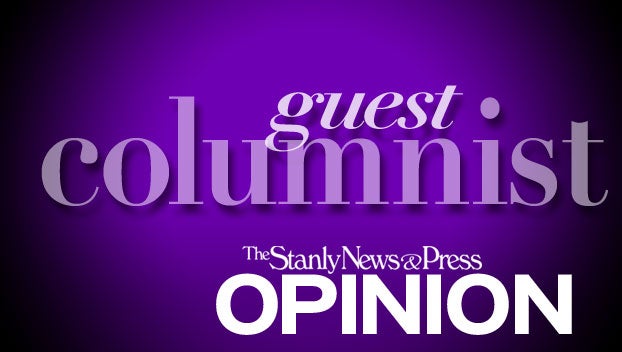JOHN HOOD COLUMN: Exit polls offer useful insights
Published 10:14 am Wednesday, January 19, 2022
|
Getting your Trinity Audio player ready...
|
Every two years, exit pollsters attempt to survey voters who’ve just cast ballots. They post interviewers at hundreds of voting sites across the country. They call and email voters who cast ballots by mail. The resulting exit polls are often roundly criticized and improperly reported (such as when journalists circulate and comment on raw exit-poll totals on Election Night that have not been weighted based on actual election returns).

John Hood
Flawed as they are, exit polls still offer useful insights about how and why voters choose candidates. For every political pro who swears off exit polls, there is a political pro who swears that an exit-poll result supports a cherished talking point. Often, it’s the same person making both claims.
In my view, as long as you don’t fixate on tiny gaps that could simply be products of faulty sampling, exit polls are a handy tool. Consider, for example, the 2020 gubernatorial race in North Carolina. Incumbent Roy Cooper prevailed with 51.5 percent of the vote to Dan Forest’s 47 percent, even as Donald Trump (49.9 percent) and Thom Tillis (48.7 percent) prevailed over their Democratic opponents in the state.
There may be fewer split-ticket voters than there was a generation or two ago, in other words, but in a state like North Carolina they can still be decisive. According to the National Election Pool exit poll, Cooper earned the votes of 8 percent of those who voted for Trump and Tillis. Forest received only 2 percent of the votes of Biden and Cal Cunningham supporters.
More broadly, political junkies can learn a lot by reading a new compendium of national exit polls published by the American Enterprise Institute. Some of the questions date back to the 1972 election cycle.
One of the most striking findings has to do with the “gender gap,” the propensity of male and female voters to choose different candidates for president. There was no such gap in 1972 or 1976. But in 1980, men voted for Ronald Reagan at a markedly higher rate (55 percent) than women did (47 percent). Since then, the gender gap has usually been significant. In 2020, Trump won male voters by eight points while Biden won female voters by 15 points.
With regard to race and ethnicity, the biggest change in voting behavior over the past half-century concerns voters identified as Asian (a ridiculously broad category, alas, but you work with what you have). Even as Bill Clinton was winning the presidency in 1992, Asians voted for incumbent President George Bush by a whopping 55 percent to 31 percent (with Ross Perot receiving the remainder). Asians also favored Clinton’s 1996 opponent, Bob Dole, albeit by a smaller margin.
Since then, however, Democratic candidates have always won the Asian vote — by something like a two-to-one margin in 2020, for instance, depending on which exit poll you consult. While some may well have switched their partisan preferences over time, it’s also likely that recently naturalized citizens and young Asians have different views and priorities than previous generations of Asian voters did.
By contrast, there’s been little change in black voting patterns. Among Republicans, Richard Nixon (18 percent) and Gerald Ford (16 percent) have fared best among African-Americans. Other GOP candidates have typically drawn between 8 percent and 12 percent. As for Hispanics, the Republican high-water mark was George W. Bush in 2004 (44 percent), while most other GOP candidates drew somewhere between a quarter and a third of the Hispanic vote.
Here’s one more noteworthy trend: during the 1980s, college-educated Americans tended to prefer Republicans to Democrats. During the next two decades, however, their votes became less predictable — in part because the universe of college-educated voters was growing. Today, while Americans with graduate degrees vote lean heavily Democratic (62 percent to 37 percent in 2020, according to one of the exit polls), the votes of those with undergraduate degrees are truly up for grabs. Mitt Romney won this voting group by four points 2012. Biden won it by four points in 2020.
Exit polls aren’t perfect. That hardly make them useless, however.
John Hood is a John Locke Foundation board member and author.


